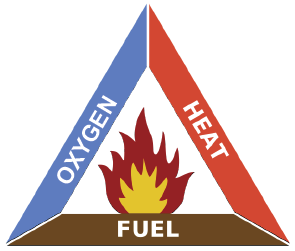Fire management improvement
Project objective
To provide mobile equipment designers and users with structured information that enables the prevention of mobile equipment fires and the mitigation of the consequences should an event occur.
Introductory video (5:05 minutes).
Background
Despite ongoing improvements, there is still a high incidence of mobile equipment fires in both surface and underground mining equipment. There is a need for the hazards to be controlled through appropriate designs and management practices. In turn, regulators are requiring mandatory statutory reporting in most mining jurisdictions and now expect that mine operators will improve their mobile equipment fire management performance.
Mobile equipment fire events:
Present significant fatality exposure for operators, maintainers and emergency responders
Can be catastrophic in underground operations
Create wider operational and commercial issues for earth moving equipment owners and operators
....there is still a high incidence of mobile equipment fires in both surface and underground mining....
This industry project
EMESRT first turned its attention to mobile equipment fires in 2007, when it published an initial Design Philosophy 4 – Fire (DP-4).
DP-4 is a high-level overview of problems that can lead to adverse consequences from mobile equipment fire events. It provides visual operational scenario information to assist OEMs in designing equipment to reduce the exposure to and the consequences of unwanted equipment fires.
This project is an extension of the original work carried out in developing Design Philosophy 4 – Fire.
This project was motivated by the EMRST advisory group discussions that recognised and identified issues with fundamental original equipment design, e.g., separation of fuel from heat sources and ongoing issues with routine maintenance practices including hot work.
Furthermore, fire detection and suppression systems design and installation are not integrated between original equipment manufacturers and third-party suppliers. Maintenance of fire suppression systems once installed can be ineffective.
The mobile equipment fires management project is focused is on ways to understand and mitigate harm related to equipment fires as much as reasonably practical, including using design to address foreseeable human error.
Fire event taxonomy
Using the heat, fuel and oxygen fire triangle, the technical working group discussed and documented fire event areas of influence using the control effectiveness approach. This process unearthed five areas of influence:
- Mobile equipment design
- Mobile equipment maintenance
- Fire system detection and suppression design
- Operation*
- Local and emergency response*

Based on the above areas of influence, the TWG developed Performance Requirement 4 – Mobile Equipment Fire Management (PR-4) in 2021. PR-4 provides comprehensive information for mobile equipment designers, mining companies, fire detection and suppression system designers, and third-party suppliers and maintainers. PR-4 was published following several iterations, and one-on-one meetings with major OEM’s.
It is recommended that Design Philosophy 4 and Performance Requirement 4 be read in concert. Together they provide structured and comprehensive information for mobile equipment designers, mining companies and fire detection and suppression system designers, suppliers and maintainers.
Visit the Fire Body of Knowledge to access industry resource materials developed by this project.

